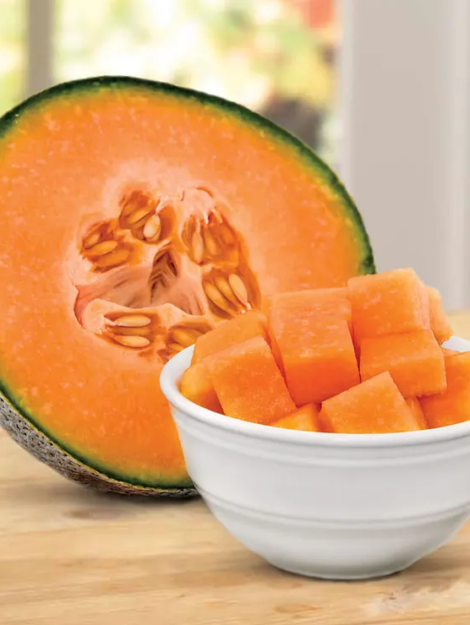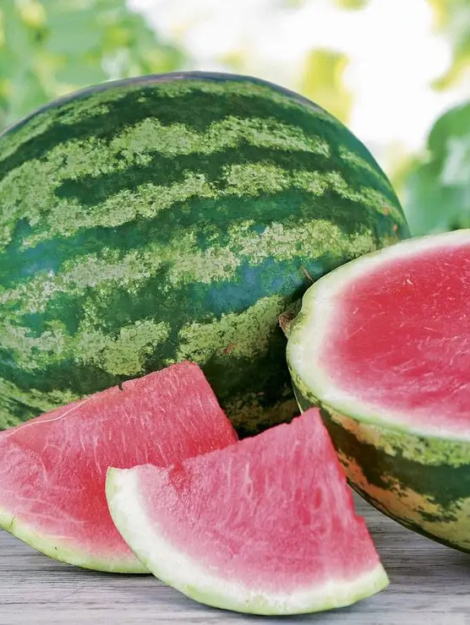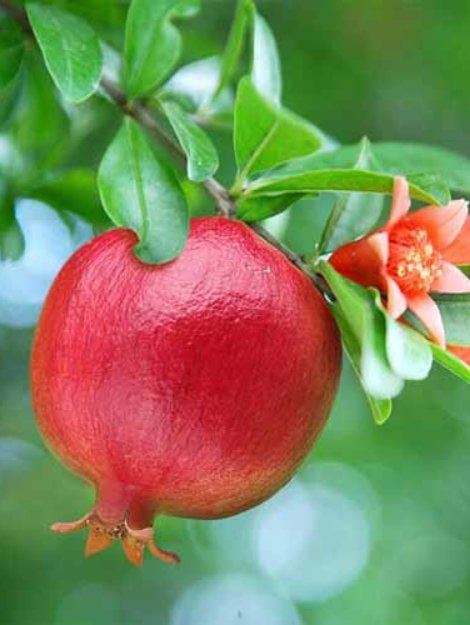Days to Maturity: 78
Topgun, an early F1 hybrid watermelon, sets uniform, globe-shaped fruits that weigh about 22 to 26 pounds each. Compared to other Crimson sweet types, Topgun has a classic Crimson sweet rind appearance but has better fruit quality. The medium green outer rind is firm and waxy with broad, medium dark green stripes. The deep red internal flesh is sweet, crisp, and juicy and has medium-large seeds. Watermelon is a rich source of water and healthy nutrients, including carotenoids (i.e., lycopene and Beta carotene), amino acids (i.e., citrulline and arginine), and vitamins A, B6, and C.
Topgun, an annual herbaceous plant, is a member of the cucumber and squash family (Cucurbitaceae), commonly called cucurbits. Topgun watermelon has good disease resistance and excellent vigor. It grows on the ground as a large, long, scrambling vine with trailing branched tendrils and yellow-spotted leaves. Fruit is ripe and ready for harvest when the blossom end is soft, and the nearest tendril is brown and dry. The bottom of the watermelon (touching the ground) should be yellow, not white, and the melon should sound hollow when tapped.
Watermelon is monoecious, having both male (pollen) and female (fruit) flowers, and does not need a second plant for pollination. But the female flowers must receive pollen from the male flowers to set fruit, which is usually carried out by bees. So, it may be helpful to plant bee-attracting plants, like marigolds and zinnias, nearby to ensure pollination.
Easily grown from seed, watermelon prefers a sunny location with fertile, organically rich, consistently moist, well-draining sandy loams with a pH of 6.5 to 7.5. Watermelon is intolerant of shade and overly wet soil; however, water should be applied liberally during early growth and fruiting, but overwatering at the end of ripening can result in bland fruit. Fertilize well.
A warm-season vegetable, sensitive to cold temperatures and frost, watermelon seeds can be direct sown into warm spring soil after the last frost date. For an earlier harvest, seeds can be started indoors 3 to 4 weeks before the last frost date and transplanted in the garden after all threat of frost has passed and the soil temperatures are 70°F. Flowers begin to set fruit with night temperatures between 55 and 75°F. Protect plants with row covers if temperatures are expected to dip below 50°F. Mulching helps to moderate soil temperature as well as to maintain soil moisture and control weeds
 Cart is empty
Cart is empty 




Reviews
There are no reviews yet.